Played the two-player board game 'Patchwork: Winter Gifts' that gets tiles and fills the board like a puzzle & made a cookie with the enclosed mold

' Patchwork: Winter Gift ' is a game with the theme of '
◆ 1: Patchwork preparation & play
◆ 2: Making cookies
Patchwork: Winter Gifts | | ANALOG GAME INDEX
http://hobbyjapan.games/patchwork-winter/
◆ 1: Patchwork preparation & play
'Patchwork: Winter Gifts' is such a package.

The surface says 'Special cookie mold!'

When I took out the contents, I found that there were 3 boards, 33 patch tiles, 50 button chips, 1 special tile, 3 tops, and 1 cookie mold.

Two of the boards are quilt boards distributed to players. The size is 9 squares x 9 squares, and there are two types of outer frames, gold and silver.

The remaining one of the boards is a time board, which is shared by two players.

There are various types of patch tiles such as square and T-shaped, and some of them are gift-shaped tiles for one square.

First, prepare before the game. Place the time board and place one patch tile on the square with the present mark.

Randomly arrange patch tiles around the time board.

Next, find the short tile for 2 squares, which is only one in the patch tile, and place a red pawn piece between the tile and the next tile in the clockwise direction.

Keep the button tips and special tiles together in one place.

Once the 'recent needleworker' has become the start player and has decided on the color of the board and time markers, place the time markers on top of each other at the start position of the time board so that the start player is on top. This time, a player who recently re-sewn a frayed button chose a golden marker and placed it on top of a silver marker. Now you are ready to start the game.

During the game, the player either 'advances his time marker one square ahead of the opponent's time marker and gets a button chip with the number of advanced tiles' or 'pays his button chip to get a patch tile and owns it. Take either action of 'place on the quilt board'. Finally, the score is the number obtained by subtracting 'the number of unfilled tiles x 2' from 'the number of button chips you have', so 'how to earn button chips and fill the quilt board with the acquired patch tiles'. 'Will you go?' Is the point. At first, you don't have any button chips, so move the time marker one square ahead to get one button chip.
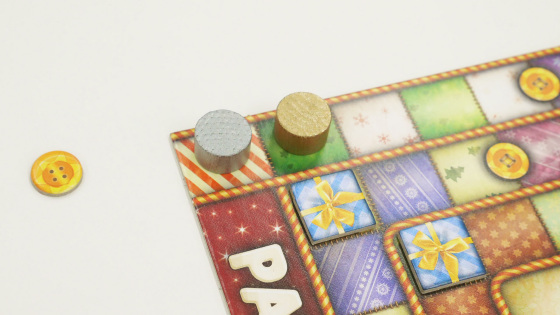
The order always starts with 'the player with the time marker behind' or 'the player with the time marker above'. The silver player in the second attack also moves the time marker, but since he moves a total of 2 squares up to 1 square ahead of the golden time marker, he can get 2 button chips.
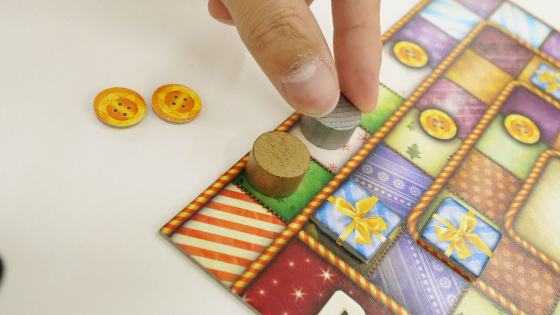
The other action, 'acquiring patch tiles,' does not mean that you can choose any of the tiles you like, but you can choose from three tiles, counting clockwise from the pawn coma. In the case of the photo below, the three patch tiles surrounded by the red frame are the patch tiles to be acquired, and the leftmost and rightmost tiles cannot be selected.

In addition, patch tiles cannot be obtained unconditionally, and you can obtain them by paying the price set for each tile with a button tip. In addition, once a tile has been acquired, the time marker must also be advanced by the number of hourglasses specified for each tile. In the case of the tile on the left of the photo, the price is 1 button chip, and after acquisition, the time marker is advanced by 2 squares.

The golden player paid a cost of 2 and won an orange patch tile. After acquiring, move the pawn piece to the place where the patch tile was. Then place the acquired patch tiles anywhere on your quilt board. Don't forget to advance the time marker after placement.
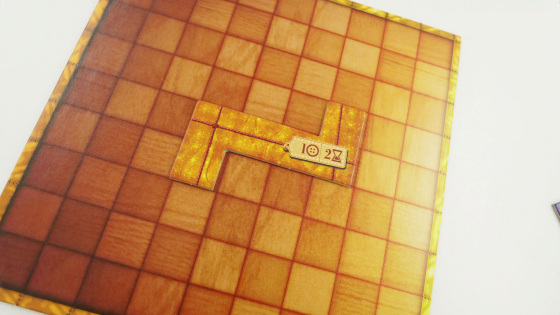
When the time marker advances to the central goal square, the player's action ends there even if the quilt board at hand is not filled. The game is over when both of them reach the goal.
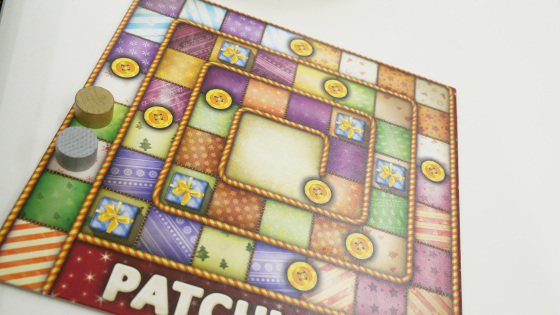
Some patch tiles have button tips on the surface.
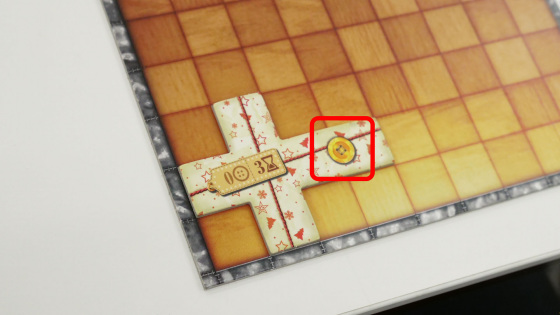
If you have placed a patch tile with a button chip on it, as a bonus when your time marker passes the button chip pattern on the time board, the number of button chips drawn on the patch tile placed on the quilt board Receive.
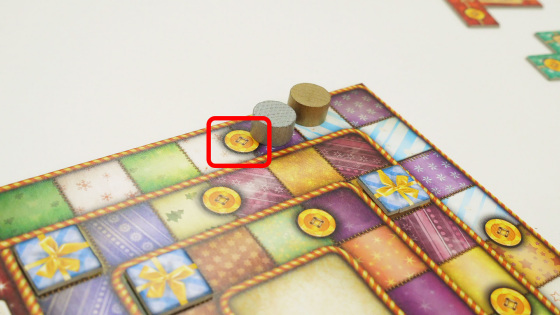
The silver player got two button chips for what was drawn on the patch tile.
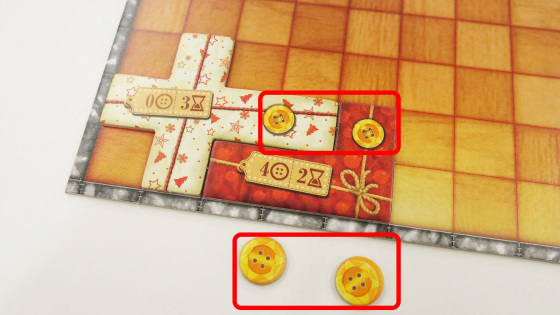
The player who first reaches or passes the square with the picture of the present will receive the bonus tile placed on the square and immediately place it on the quilt board.
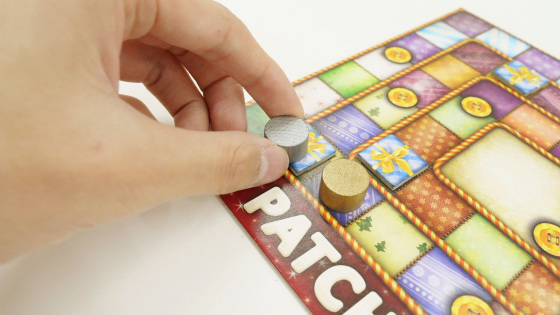
There are 5 tiles for 1 square in total, and the acquisition is first come, first served. It is very useful for filling the one square that has been slightly left.

The player who carefully filled from the edge got a 'special tile' because he filled 7 squares vertically and 7 squares horizontally with patch tiles. Keep this when you get it with tiles that will be 7 points at the time of the final score calculation. This acquisition is also first come, first served.

In both cases, the time marker reached the goal and the game was over.
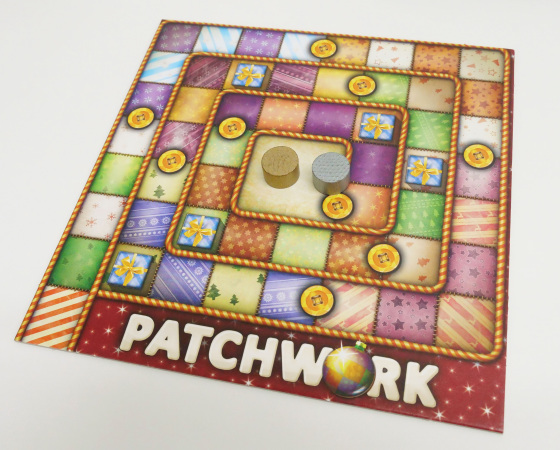
A colorful patchwork was completed, but unfortunately there were empty spaces. The final score is the sum of the button chips and special tiles you had last, minus the total of 2 empty squares. The golden player has 19 points on the button chip minus 22 points for the empty space-3 points.
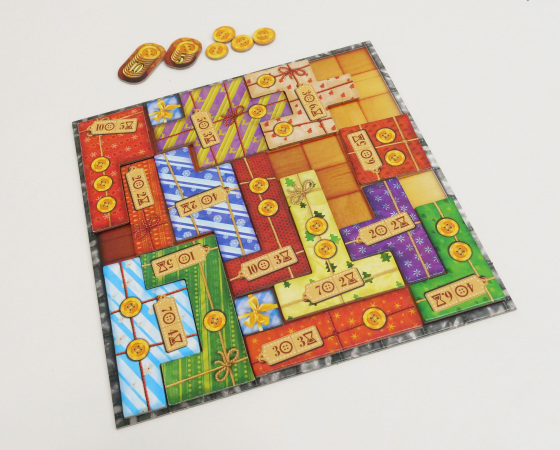
The silver player scored 22 points, including special tiles, and won a splendid victory.
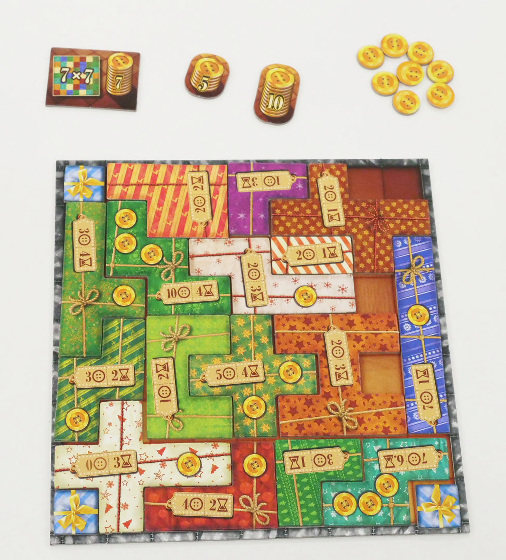
It took about 40 minutes and the rules are so simple that you can quickly get used to the game. In the first half, the number of button patches you have is small, so you can move quickly, but in the second half, you tend to think about the combination of patch tiles, empty space, and cost. The more well-shaped patch tiles and patch tiles with many drawn button chips, the higher the cost, and it is a game that suffers from conflicts such as filling the squares but advancing the time marker and reducing the turn. It is recommended for two people and does not take up much space, so it is recommended when you want to play quickly and easily.
◆ 2: Making cookies
The included 'cookie mold' is not used for the game, it is really a mold for making cookies. I decided to make a patch tile type cookie because it was a big deal. Prepare butter and sugar, this time strong flour instead of soft flour, and mix well.
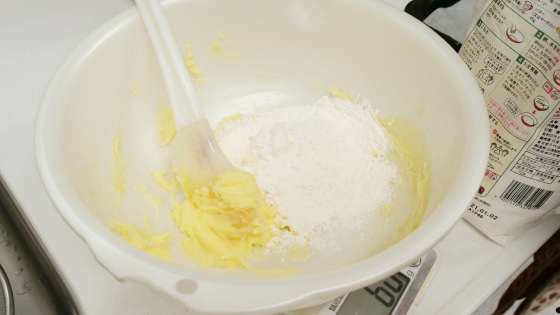
Spread the mixed dough thinly and chill it in the refrigerator.
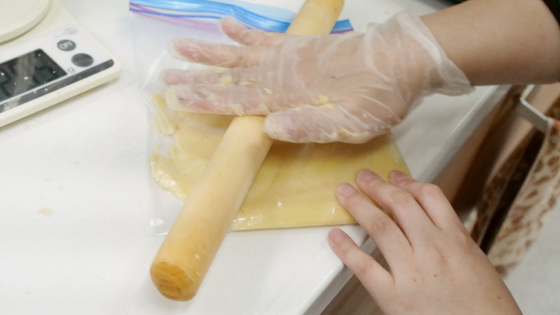
This is the one that has been chilled.
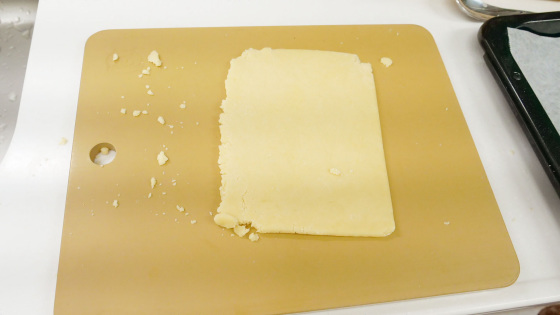
Here is the introduction of the mold.

When hollowed out, it has the same shape as a patch tile.
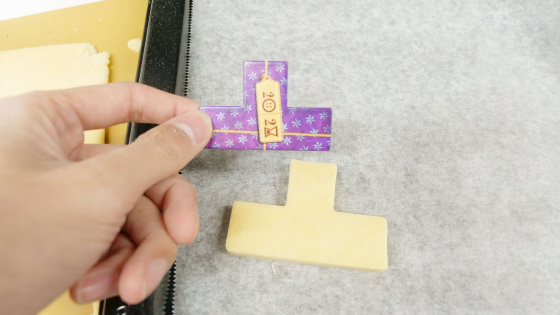
The fabric is hollowed out like a convex patch tile.
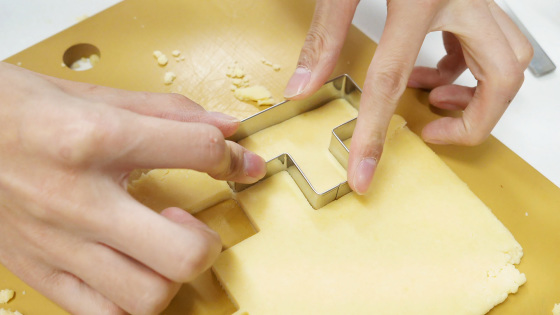
I will bake it in the oven.

It was baked in about 15 minutes. It burns in a nice color and has a delicious smell.
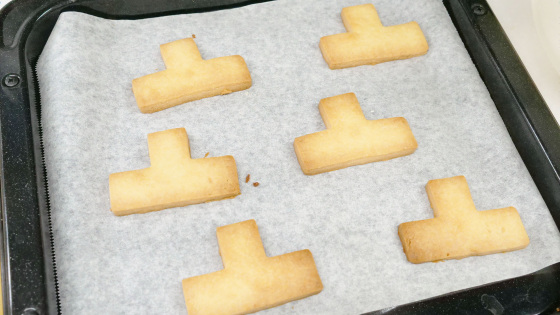
The atmosphere may be more exciting while eating patch tile type cookies.
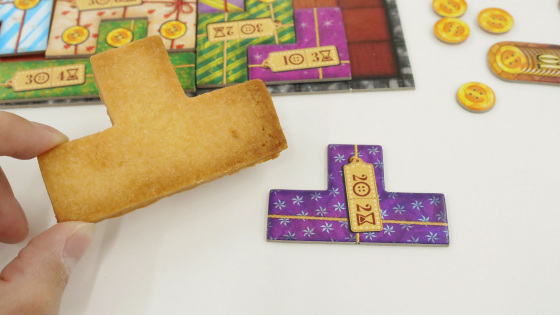
'Patchwork: Winter Gifts' can be purchased at Amazon.co.jp and the price is 3000 yen including tax.
Amazon | Hobby Japan Patchwork: Winter Gifts Japanese Board Games | Board Games | Toys
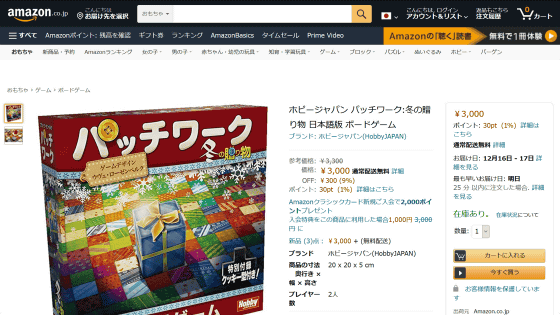
Related Posts:
in Review, Posted by log1p_kr







